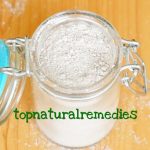How Bad Diets Can Affect the Way Your Face Looks
Sometimes, just by looking at a person’s face, you can tell what they have consumed over time. You can have all kinds of faces: gluten face, wine face, dairy face or sugar face – so how can you tell which is which?

Contents
The Gluten Complexion
There are many symptoms of gluten intolerance. They will include reddish, swollen cheeks, blackheads on the chin area, pigmentation changes and puffiness. It is believed that about 15% of the people have gluten intolerance, and it is visible by the swollen-looking face and body.
It is said that gluten disorders are similar to autoimmune disorders, where your immune system turns against you and eats away at your cells after you consume gluten. This substance can cause inflammation and bowel disorders, along with increased pigmentation of the skin. If you see these changes in your complexion, you might want to remove gluten from your diet.
The Wine-Damaged Complexion
Regular or excessive wine consumption can lead to various pathogenic conditions. Symptoms of a face harmed by wine include an oily shine between your (lowered) eyebrows combined with distinctive lines. Wrinkles around the eye area are also rather common, along with flaky and dehydrated skin, reddish skin tone, large pores and visible puffiness.
Aside from the fact that wine is high in potential sulfates and pesticides along with sugars, it also makes your skin go through dehydration. Since your body ends up losing too much water, your liver will be burdened, your digestion will be harmed and you will find yourself with a saggy, wrinkled and unattractive skin.
The Dairy Face
Also known as the “milk face,” this condition is signaled by the saggy and swollen eyebrow area. Sometimes it can spread to the whole eye area with the addition of dark circles under your eyes. Also, blackheads on the face, along with acne on the chin and pale cheeks are also a sign of dairy intolerance.
Sometimes, it might seem delicious to have some more ice cream or some milk in your coffee, but in the case of lactose intolerance, your body’s ability to process it is lowered. Your face will look red and tired, with rough and dry skin.
The Sugar-Intolerant Face
It is already known that excessive consumption of sugar can seriously damage your body’s appearance, cause obesity, energy imbalances, and overall major skin issues. Symptoms of a “sugar face” include wrinkles and lines along the forehead area, prominent eye bags, cystic acne, oily face, thinning and rough skin, as well as a pale, grayish tone. Since sugar can cause glycation, your extra glucose molecules will bind with the collagen, making it rough and hard. You should cut off sugar if you want a flawless skin, free of wrinkles and spots.
In order to see if you have an intolerance of any kind or to figure out how much you can take, you must have at least a two-week break and then start again with a minimum intake, taking note of the differences.



